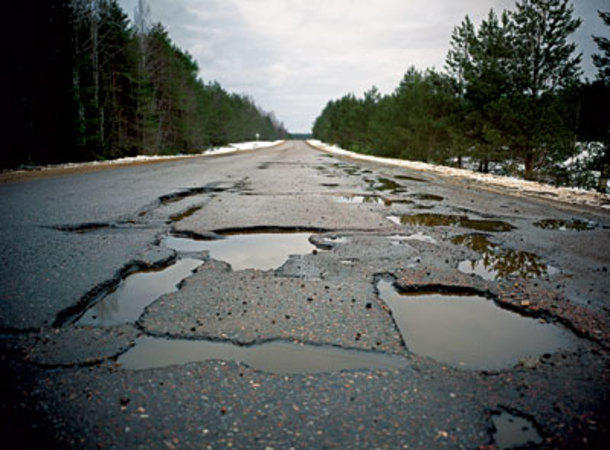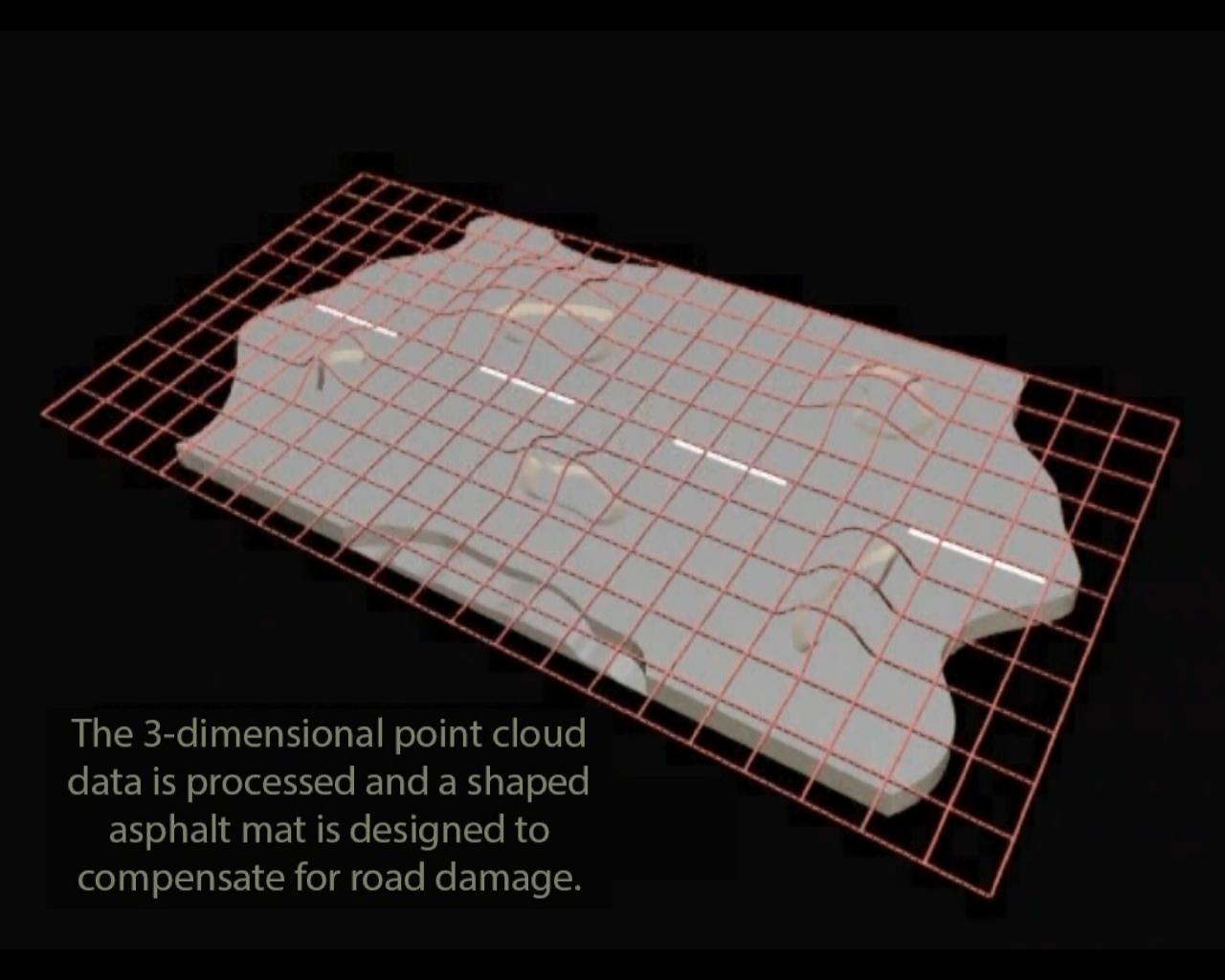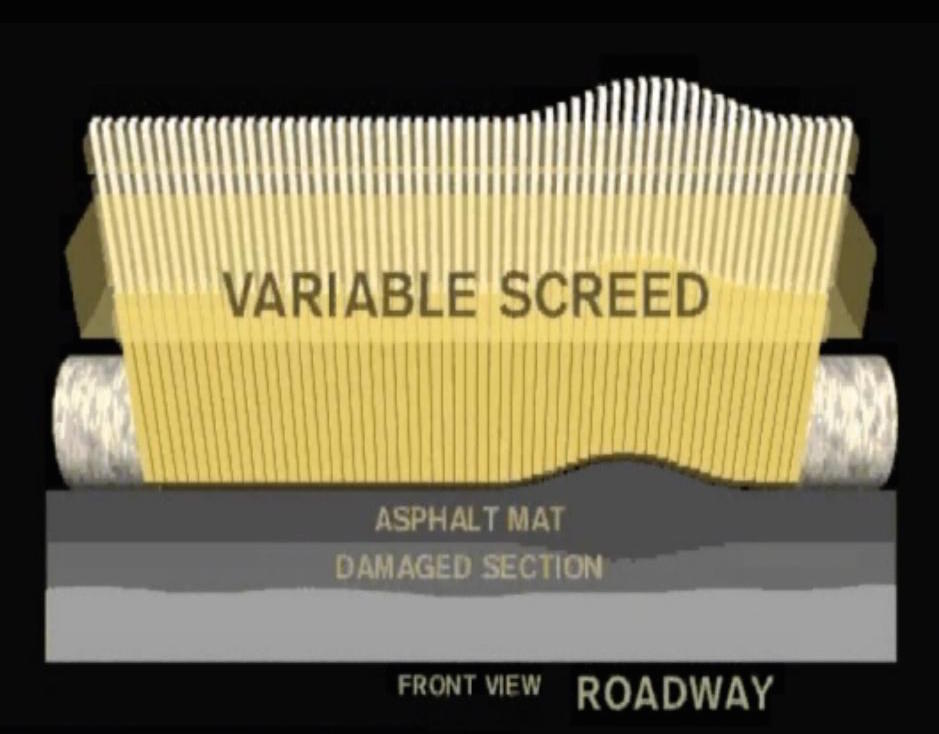We’re looking at a strange project to develop an asphalt roadway3D printing device. But will it work?
Advanced Paving Technologies proposes what they say is a new method of paving using 3D technologies. But wait, we already have machines that pave roads very well, what is the problem being solved here?
APT claims the issue is in the method of paving, which assumes a relatively flat surface, upon which fresh asphalt is applied. Normally, streets requiring repair are in fact no where near flat, as they’re full of potholes and other damage. They have an irregular surface. The standard practice today is to scrape off sufficient irregular material to produce a flat surface to apply the asphalt. APT says this two-step approach is time consuming and expensive. That’s probably true, but how do they solve the problem.
They propose to pave directly on top of the potholed surface, thus eliminating the scraping stage.
Here’s how it works: at the front end of the paver, a 3D scanner examines the surface to determine its shape. Then, the magic occurs: a variable screed automatically adjusts the paving depth to match the detected potholes, ensuring a perfectly flat roadway surface.
Sounds good, but will this actually work? We are very suspicious. First, repeated applications of this process will just make the roadway thicker, eventually flowing over the curbs! It’s very likely you’d have to scrape material down anyway eventually, perhaps even after only one or two 3D asphalt applications.
The second problem we see is more devious: the potholes are formed by weakened material on the surface, typically by pounding, but also erosion by water and ice – and mostly by ice freezing and expanding in cracks. As a result, you’d most likely find the areas immediately surrounding potholes to be quite weak and ready to break up. You cannot build a road on top of that weak material; it would quickly deteriorate. You’d also have to remove any loose material before 3D asphalting as well.
We think this idea of an asphalt 3D printer needs a bit more thought, don’t you?




